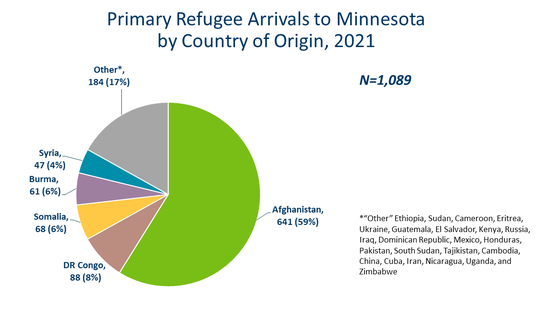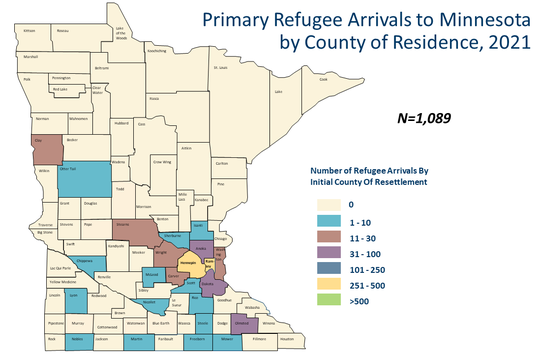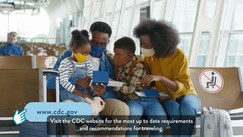|
Refugee and International Health Quarterly |
|
|
View this as a webpage
August 2022
We had to take an unexpectedly long hiatus from publishing our quarterly newsletter, but we are officially back! The newsletter will provide you with program updates and highlights of our community partners.
So, what happened since January 2020? Like many of our colleagues in public health, our program staff were reassigned to assist with the agency’s COVID-19 pandemic response for about two years; many of us returned to our regular duties in early 2022. During our various reassignments working on epidemiology and surveillance and with communities to address heath care and immunization access gaps, we continued to learn of opportunities to improve our services for newcomers in our communities – meeting them where they are. We hope to integrate these lessons in our ongoing efforts.
During the past year, we had staffing changes. We’re excited that Erica Chung was able join the Infectious Disease Engagement and Equity Unit as an International Health Planner in February 2022, and we welcomed Lily Rubenstein, Refugee Nurse Consultant, and Cynthia Treviño, LISW, Health Systems Navigator, to the Refugee Health Program in May 2022.
In this newsletter, we will also share updates on recent refugee health screening guidelines, the 2021-2022 arrival demographics, the Afghan resettlement medical response and the preparation for Ukrainian arrivals, and the revamped MDH traveler’s health website.
We are grateful for your partnership and look forward to our ongoing collaboration!
Afghan Medical Response
Between October 2021 and February 2022, 1,260 Afghan evacuees, across 386 families, resettled to Minnesota as part of the Afghan Evacuee response. Most arrivals (85%) stayed at the temporary housing facility upon arrival, where an amazing team of volunteers assessed acute needs and provided high quality care to our new arrivals. With help from the University of Minnesota’s Mobile Health initiative and Medical Reserve Corps, professionals across disciplines from most of our major health systems, provided over 1,325 volunteer hours as part of this response.
Of those that arrived, 1,233 (98%) individuals completed either a brief or full health and safety check (medical intakes) as part of the MDH-sponsored health and safety assessment. Most arrivals (54%) were seen within two days of arrival. Of those who were screened, 56% were referred to at least one specialty referral. The largest number of referrals was for dental needs, with 234 individuals needing a dental follow-up.
Our response evolved over time as needs were discovered. In early December, a women’s clinic was offered for all women ages 18 or older. The purpose of this women’s clinic was to create a private and safe space for adult women to discuss sensitive medical and social heath concerns. Having female interpreters and providers was a key piece to providing that safe space and increase reporting of mental health and medical concerns. A weekly women’s group evolved to address major health concerns found during the clinics (mainly stress). Volunteers led yoga sessions and provided child care during this group time. One volunteer noted, “it was like seeing a whole different person.”
This June, we presented Minnesota’s Afghan care model response at the 2022 North American Refugee Health Conference along with our partners from the University of Minnesota.
UNHCR highlights MN-based health care professionals who assisted with the Afghan Resettlement’s Medical Response Team: Meet three allies delivering healthcare and empowering refugees in Minnesota.
Announcements
|
|
|
The Centers for Disease Control and Prevention (CDC) is continuing to release updated Guidance for the U.S. Domestic Medical Examination for Newly Arriving Refugees. The Minnesota Department of Health Refugee Health Program then updates local recommendations based on Minnesota-specific epidemiology and resources. Minnesota Domestic Refugee Health Screening Guidance updates have been posted for tuberculosis (TB), viral hepatitis, sexual and reproductive health, HIV, malaria, lead, and mental health and emotional wellbeing. We shared the TB and syphilis screening changes in the February 2020 Refugee and International Health Quarterly; Below are changes in the sexual and reproductive health and HIV screening guidance.
- Addition of more explicit guidance regarding pregnancy testing: a urine pregnancy test is recommended for all women of childbearing age and pubescent adolescent girls.
- Addition of more explicit guidance regarding chlamydia and gonorrhea: female arrivals younger than 25 years of age who are sexually active and do not have documented pre-departure testing.
- New guidance on female genital mutilation/cutting (FGM/C). Screening is recommended for women and girls from countries where FGM/C is practiced for associated medical complications.
- Reminder: Minnesota recommend re-drawing syphilis tests for those with negative results overseas.
- Stronger recommendations for universal screening.
- Addition of screening recommendations for those under 2 years old: RNA or DNA nucleic acid tests (NATS). Antibody/antigen tests should not be used for this age group.
- New recommendation to repeat screening 3-6 months after resettlement for those with recent exposure and/or high-risk activity.
Viral hepatitis was just updated and intestinal parasites will be published in the upcoming months; we will share highlights of the screening recommendations in our next Refugee and International Health Quarterly newsletter.
Along with the written guidance, health care providers will also find Refugee Heath Microlearning Series videos that summarize the key disease-specific screening components. Each video is meant to serve as an overview of the guidance and resources for providers completing the refugee health screening and all those serving new arrivals.
The Minnesota Initial Refugee Health Assessment Form (PDF) has also been updated to reflect these guidance changes.
Population-specific guidance
We have developed a webpage highlighting health resources for Ukrainians Arriving in Minnesota. The Center of Excellence in Newcomer Health has also posted population-specific Afghan Clinical Guidance and Ukrainian Clinical Guidance. These pages include clinical recommendations, links to translated materials, webinars, and other resources.
CareRef, an interactive clinical assessment tool, is kept up to date to reflect the newest guidance. Providers can enter demographic information into this tool and receive a customized list of recommendations based on country of origin, age, and the overseas medical examination.
Due to various factors, only 400 refugees resettled in Minnesota in 2020, but we saw a 172% increase in arrival numbers from January 1, 2021, to December 31, 2021. Among the 1,089 refugees who came during 2021, 59% were from Afghanistan (the majority of those resettled as part of Operation Allies Welcome), 8% were from Democratic Republic of Congo, 6% were from Somalia, 6% were from Burma, and the remaining 21% were from 24 other countries.
 While 40% of refugees resettled in Hennepin County, 31% resettled in Ramsey County, 8% resettled in Olmsted County, 5% resettled in Anoka County, and the remaining 16% resettled in 22 other counties across Minnesota.
 From January 1, 2022 through May 31, 2022, our preliminary data show 847 refugees in Minnesota. Among these, 78% were from Afghanistan, 6% were from Somalia, 3% from Burma, and the remaining 13% were from 14 other countries.
Access Minnesota’s demographic and health screening summary data:
According to the latest United Nations High Commissioner for Refugees (UNHCR) 2021 Global Trends Report, there are currently 89.3 million forcibly displaced around the world. Here are a few key findings from the report:
- 3 million forcibly displaced people worldwide (including 27.1 million refugees)
- Top five countries of origin among refugees: Syria, Venezuela, Afghanistan, South Sudan, Myanmar (Burma)
- Top five countries hosting refugees: Turkey, Colombia, Uganda, Pakistan, and Germany
- Only 57,500 refugees officially resettled in a third country
|
|
|
With COVID-19 travel restrictions easing, we are seeing an increase in travel in our communities, especially international travel. If you are planning on traveling soon, please take a moment to check out our new and improved Traveler’s Health hub! The webpages contain resources on how plan a safer trip abroad and what to do before, during, and after an international trip. If you will be traveling to a country where diseases like malaria, dengue, or measles are endemic, you can also find specific information on preventative measures at Guidance for Travelers: International Travel & Infectious Disease.
For organizations that serve community members traveling internationally, our Materials and Resources: International Travel & Infectious Disease page contains posters, handouts, and videos on topics related to travel. You can find materials to encourage community to get tested for COVID-19, tips on what to do if your travel medication is too expensive, and videos and flyers on how to stay safe when traveling abroad in a variety of different languages.
As new print and video resources and guidance on international travel are developed, they will be added to our Traveler’s Health hub. Resources will continue to be translated into languages spoken by our refugee, immigrant, and migrant communities in Minnesota. |
|
 |
We encourage feedback! If you are seeing an information gap in your community, need resource support, or have input on how to improve our current webpages, please let us know. To share feedback or to get printed versions of the materials and resources, please email health.idee@state.mn.us
Subscribe to receive email updates from the Center of Excellence in Newcomer Heath, including CareRef, screening guidance, webinars, Immigrant Health Matters quarterly articles, and other resources.
|
|
|
|
|